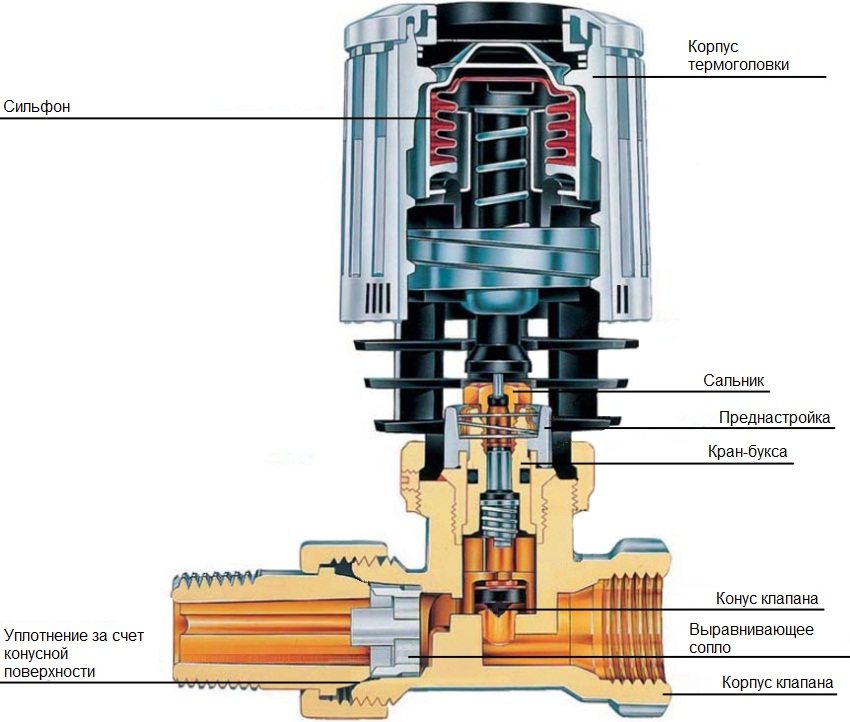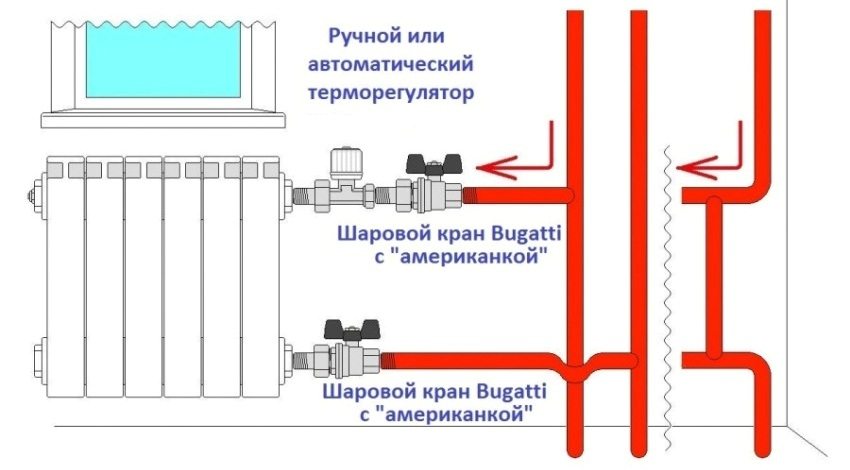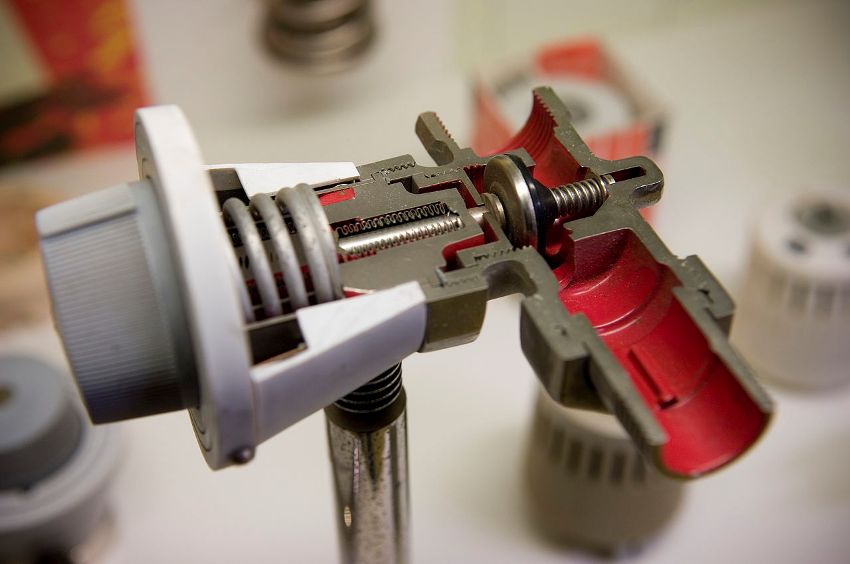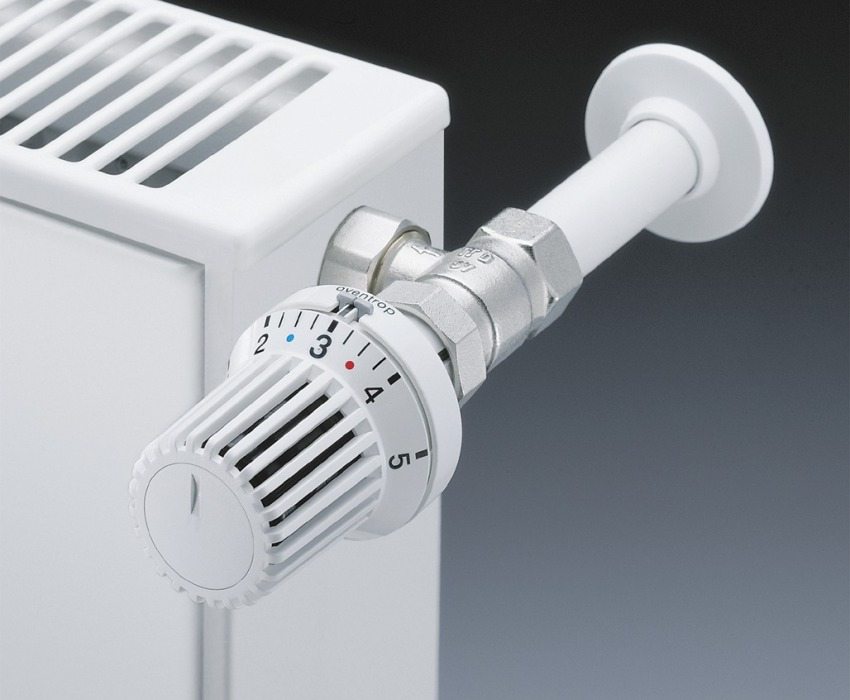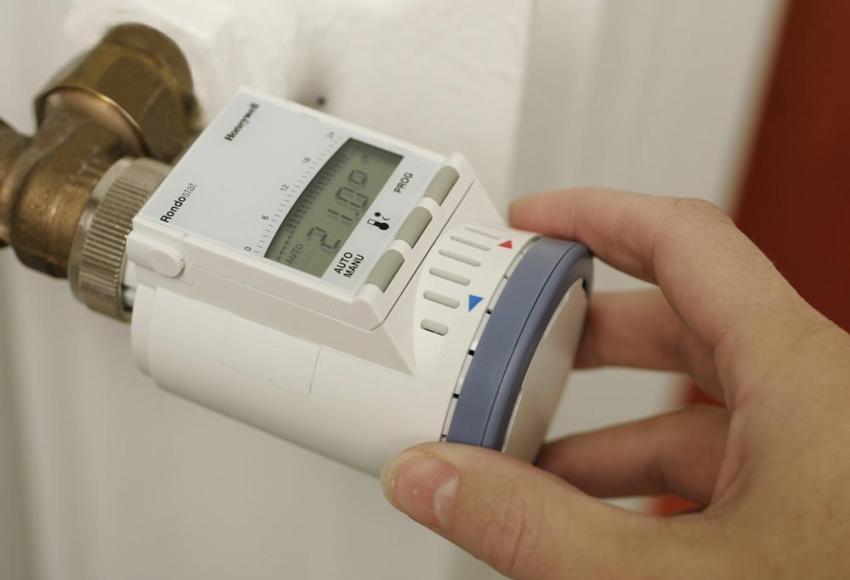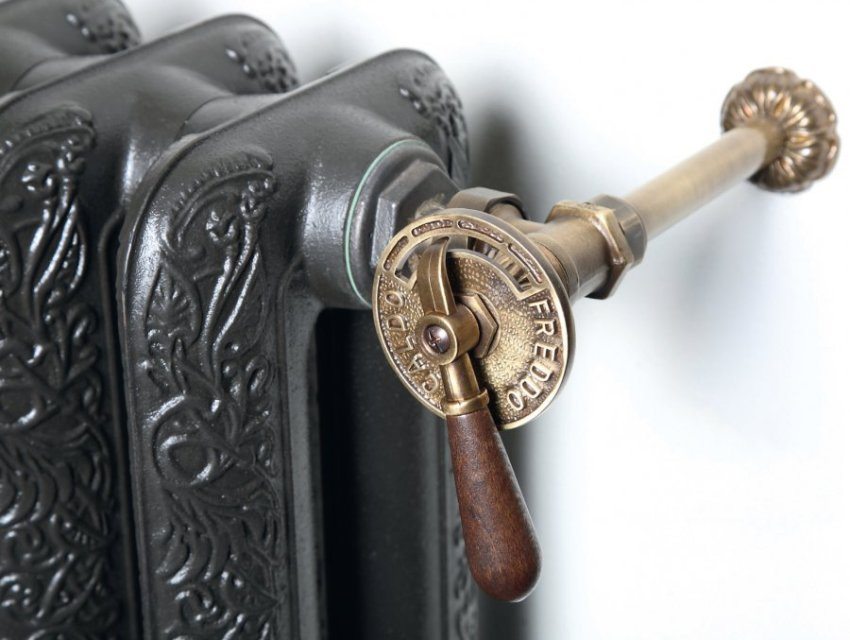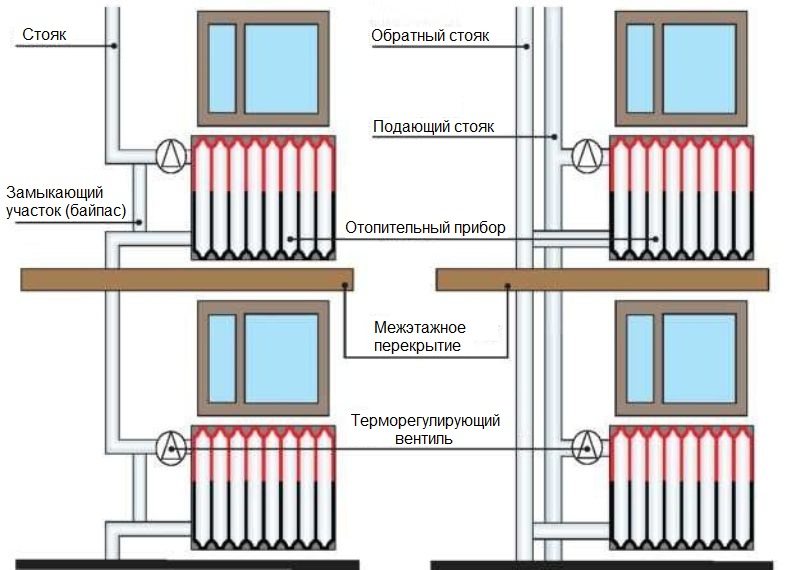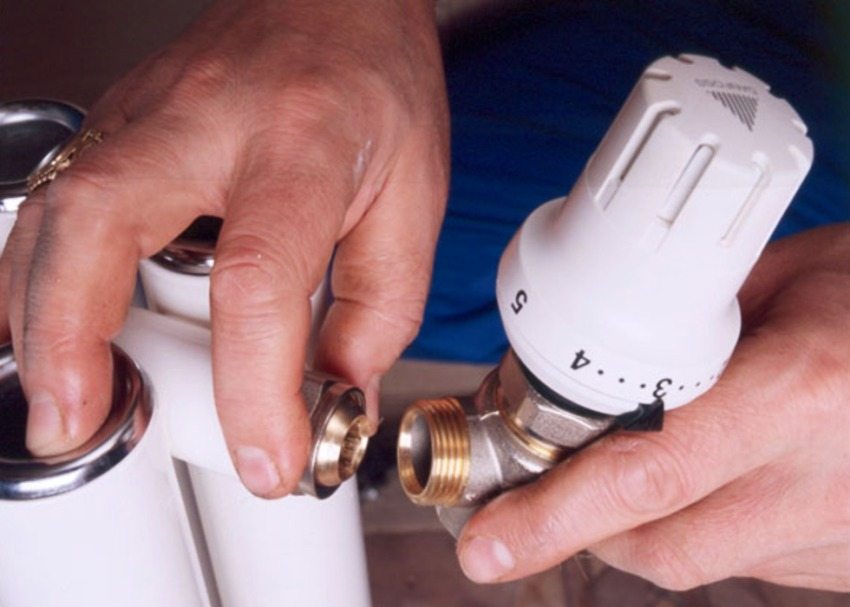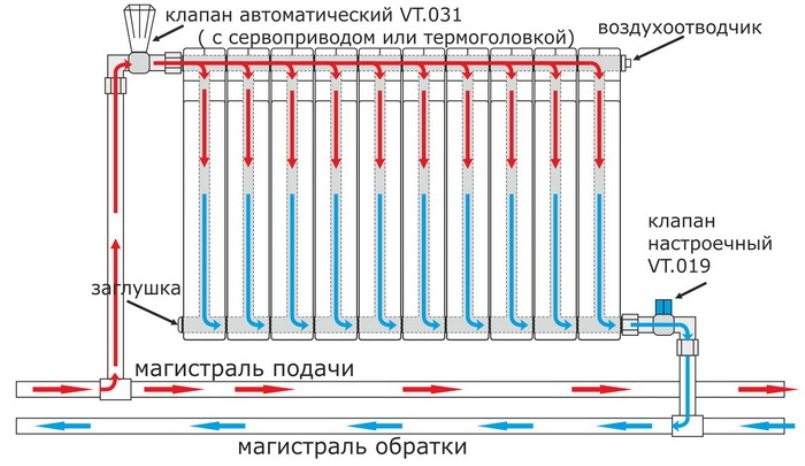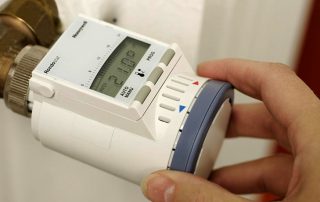In some houses, even in severe frosts, you can see open vents. "To heat the street" in the times of the widespread installation of meters is an unjustified luxury. To maintain a favorable temperature in the room, use a thermostat for a heating radiator. Using this mechanism, you can achieve a comfortable environment in the house, while saving a considerable amount on heating.
Content [Hide]
The principle of operation of the thermostat
There are two methods of indoor climate control - qualitative and quantitative. In the first case, the very temperature of the water in the system changes. This is done using a mixing unit installed in the boiler room. The quantitative method implies control over the flow of the coolant into the battery. This is the main function of a thermostat for a heating radiator.
Related article:
|
When the ambient temperature rises in the electronic device, a special thermoelement is triggered, partially blocking the lumen of the tap. The hot water supply is reduced and the battery cools down. When the air temperature drops, the process starts in the reverse order. All operations are performed without human intervention.
Useful advice! TIt is better to install thermostats in private houses on panel-type batteries with a small capacity.
Types of shut-off and control valves
Installation of regulating devices in front of the radiators provides not only temperature control, but also the solution of emergency safety issues. If the battery leaks and requires replacement or repair, it can be disconnected from the system with one turn of the crane.
The coolant flow is controlled using the following elements:
Ball valve
Suitable only for disconnecting the battery, since it operates in two modes - "open" and "closed". As a thermostat for a heating radiator — ineffective. The shutter must not be kept half-open. The reason is that the ball valve, standing in an intermediate position, gradually deteriorates. It is damaged by solid particles circulating through the pipes along with the coolant.They inevitably leave scratches on the polished ball, as a result of which the tightness of the seal is lost.
Cone valve
In general, a fairly functional and low-cost solution. It is possible to regulate the water supply, but all operations have to be done manually. There is no markings on the locking device. It is necessary to experimentally select the position of the valve in order to reduce or increase the temperature of the radiator. Constant manipulation of the crane also does not pass without a trace for it - most often the protective cap of the device breaks.
Automatic thermostat for heating radiator
This is the best option for modern housing. The mechanism of the device consists of two parts - a sensitive heat head and a valve. They interact with each other without the involvement of any energy. Thermal head (bellows) is a hollow corrugated cylinder filled with gas or liquid.
If the air temperature rises in the room, the liquid in the cylinder expands and the bellows increases. This sets the valve stem in motion. The coolant flow into the battery is partially blocked, which allows the air temperature to be adjusted downward. If it becomes cool, the volume of the working medium in the head decreases. The stem falls into place, the valve opens the passage for the coolant. The battery is heating up.
Heat heads have a large margin of safety. They can withstand about a million expansion and contraction cycles. The device will not work out such a resource in 100 years.
Useful advice! First of all thermostats installed in rooms with unstable temperatures (in the kitchen or in rooms with windows to the sunny side). In private cottages, devices are mounted on the radiators of the upper floors, where warm air rises. Due to this, the temperature regime is leveled throughout the house.
Technical features of automatic thermostats
The principle of operation of thermostats for heating radiators is the same, but there are a number of design differences.
By control method
Manual thermostats. Such devices have a valve head, on which graduations from 0 to 5 are applied. By turning the handwheel of the valve, we increase or decrease the passage opening for the coolant.
Zero denotes a completely closed battery, the rest of the numbers represent an adjustable temperature range from 14 to 24 degrees.
Electronic device. Powered by batteries or rechargeable battery. This is the most massive and expensive device of all, but its capabilities are expanded. The thermostat is equipped with a temperature sensor, remote or built-in. When the external conditions change, the sensor sends a signal to the microprocessor, and the thermostat is triggered.
The cost of the device quickly pays off due to the savings in heat energy. The device can be programmed to change the temperature during the day, as well as on the days of the week. For example, from 9 to 17 o'clock, set the temperature to 10-15 degrees, and later raise it to a comfortable 22 degrees.
By the composition of the working environment
The bellows can contain liquid or gas. Gas thermostat for heating radiator responds faster to rising-lowering temperatures. But liquid relay respond better to bellows pressure. In addition, they are easier to manufacture, so they are available in an expanded range.
Regulators in one-pipe and two-pipe heating systems
In homes with the old one-pipe system, the batteries are connected in series. This means that the thermostat, by interrupting the supply of the coolant to one radiator, actually stops the circulation of hot water throughout the system.Replacing old batteries with modern convectors should be accompanied by the installation of a bypass - a pipe connecting the inlet and outlet of the pipeline.
For such a system, thermostats with a large inner diameter and low resistance are chosen. If this moment is not taken into account, then all the coolant will go through the bypass, and the batteries will remain cold.
In a two-pipe system, the radiators are connected in parallel. Disconnecting one battery will not affect the operation of the others. A bypass is not needed here, and a thermostat with a high hydraulic resistance can be installed for effective temperature control.
Helpful advice! Regulators work much more efficiently on aluminum, bimetallic and steel radiators with low thermal inertia.
Thermostat installation rules
Any shut-off and control valves are mounted taking into account the direction of movement of the coolant. The appliance has an arrow, the course of which should coincide with the direction of the flow of hot water. Mount the regulator only in this position.
The device must be placed horizontally, parallel to the floor. If the tap stands upright, the thermal head will be in the stream of warm air from the pipe. As a result, the device will not be able to accurately respond to temperature changes. With a permanently half-open valve, the room temperature will be lower than the set one.
Do not cover the thermostat with decorative panels or heavy curtains. If this is still necessary, then it is better to purchase a regulator with a remote sensor, which is installed at a distance from the valve.
Finally. The efficiency of heating devices equipped with thermostats increases many times over. Installing thermostats saves on bills, simplifies system repairs and creates a good microenvironment in the home.


